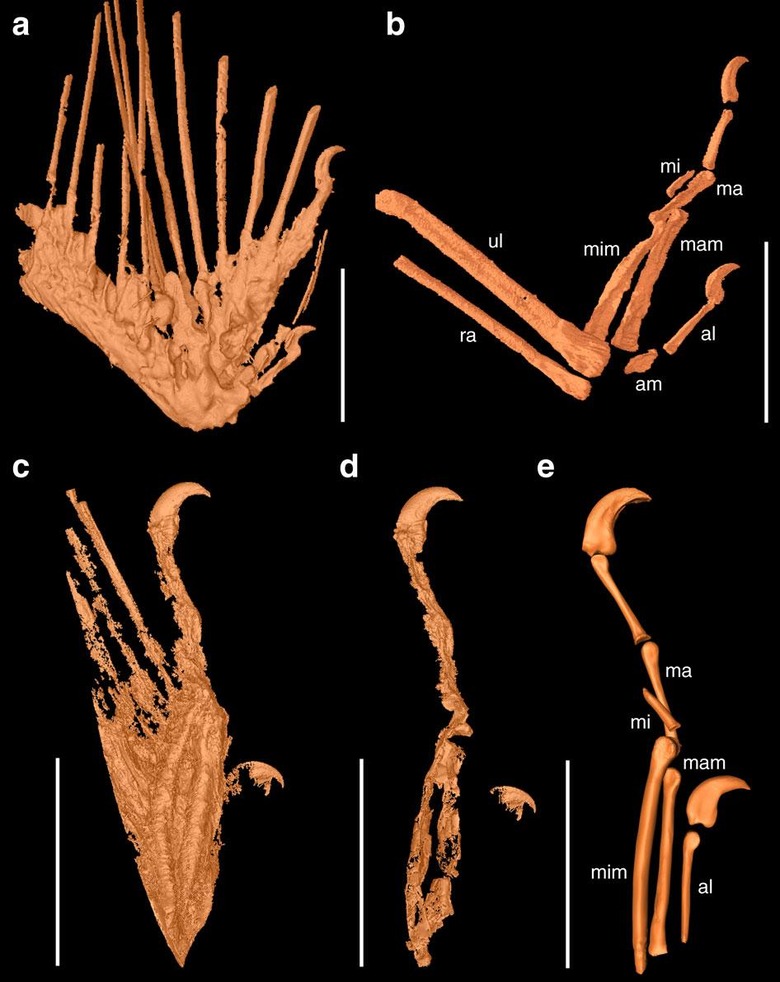Dinosaur-Age Bird Wing Discovered In Amber Jewelry Market
Bird skin, claws, muscle, and feathers have been discovered in amber dated to nearly a hundred million years ago. Researchers suggest that these bits and pieces of birds show how coloring and arrangement of bird feathers has remained largely the same for a very, very long time. Wing tips is what they have. A very strange (but apparently not entirely uncommon) origin story is what they've got to tell.
The team of researchers on this project have published a paper in Nature Communications. There they've shown that plumage from ancient birds largely matches that of birds that still fly today. Almost as if they got it right the first time then had no reason to change – ever!

Photograph above by Ryan C. McKellar, Curator of Invertebrate Palaeontology at the Royal Saskatchewan Museum.
This most certainly isn't the strangest bit of a dinosaur-age creature ever found. That honor still goes to the fluffy poodle dragon we wrote about this past July.
What is odd here is the surprisingly complete nature of the find. While most prehistoric bits of feather have been written about and scientifically acknowledged through compression fossils, this find has the whole wing encased in sap. It's basically the same as it was when it was first captured by the goop from a tree!
"The biggest problem we face with feathers in amber is that we usually get small fragments or isolated feathers, and we're never quite sure who produced," says co-author of the study we're speaking about today, Ryan McKellar, curator of invertebrate palaeontology at Canada's Royal Saskatchewan Museum.
"We don't get something like this. It's mind-blowingly cool."
The other oddity in this sample – the one you see above – is in how it was collected. Originally harvested by citizens of the Hukawng Valley in Kachin state, northern Myanmar, Burma. The sample was taken out of the area, polished, and sold in a well-known amber market in capital of Kachin state, Myitkyina.
The image you see above shows the sample called "Angel", so named because of the original market vendor's nick-name for the piece, "Angel's Wings." He'd originally intended this bit of amber to become a pendant for a necklace.
While it is fortunate that the researchers on this project were able to acquire this piece of biological history, it remains unfortunate that they weren't the first to get to the sample.

ABOVE: (a) Mummified DIP-V-15100, showing rachises, skin, muscle and claws. (b) Skeletal morphology of DIP-V-15100, using different density threshold. (c) Mummified DIP-V-15101, showing rachises, skin, muscle and claws. (d) Skeletal morphology of DIP-V-15101. (e) Reconstruction of osteology based on the CT data. al, alular digit; am, alular metacarpal; ma, major digit; mam, major metacarpal; mi, minor digit; mim, minor metacarpal; ra, radius; ul, ulna. Scale bars, 5 mm.
According to National Geographic, this sample is truncated. The researchers on this project suggest that it was very likely part of a larger specimen – maybe even a full bird.
This project was funded in part by the National Geographic Society's Expeditions Council. You can find the full text of the research in Nature Communications under the title "Mummified precocial bird wings in mid-Cretaceous Burmese amber" with code doi:10.1038/ncomms12089 – open for reading when this article is being first published.
